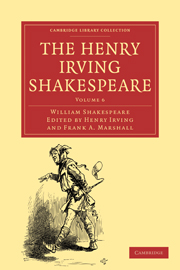2 - ANTONY AND CLEOPATEA
Published online by Cambridge University Press: 29 August 2010
Summary
INTRODUCTION
LITERARY HISTORY
” The Tragedie of Anthonie and Cleopatra” was printed for the first time in the Folio of 1623. “A booke called Anthony and Cleopatra” was entered by Edward Blount in the Stationers’ Registers, May 20, 1608. Blount was afterwards one of the publishers of the First Folio, and it seems most probable that this entry relates to the play of Shakespeare. Possibly the play was written a little earlier than the year in which it was first entered, and a certain kinship which the play seems to have—despite some marked differences—with Macbeth perhaps favours the supposition. The dramatic method, indeed, in the two plays, or rather the precise form of the construction, is (as I shall point out later) of a quite dissimilar kind. But the style in both plays seems clearly to belong to the same period, and there are various interesting links connecting the characters of Macbeth and Antony.
As in all the Roman plays, Shakespeare has taken the materials for his tragedy from North's version of Amyot's Plutarch, which appeared in 1579; a translation perhaps twice removed from the original—for the great Bishop of Auxerre, one of the earliest masters of really nervous and scholarly French, is said to have followed a Latin text—but a translation, certainly, which is still the most inspiring version of the most inspiring book of antiquity. How closely Shakespeare has followed the life of Marcus Antonius will be seen from the quotations given in the notes.
- Type
- Chapter
- Information
- The Henry Irving Shakespeare , pp. 111 - 216Publisher: Cambridge University PressPrint publication year: 2009First published in: 1889

